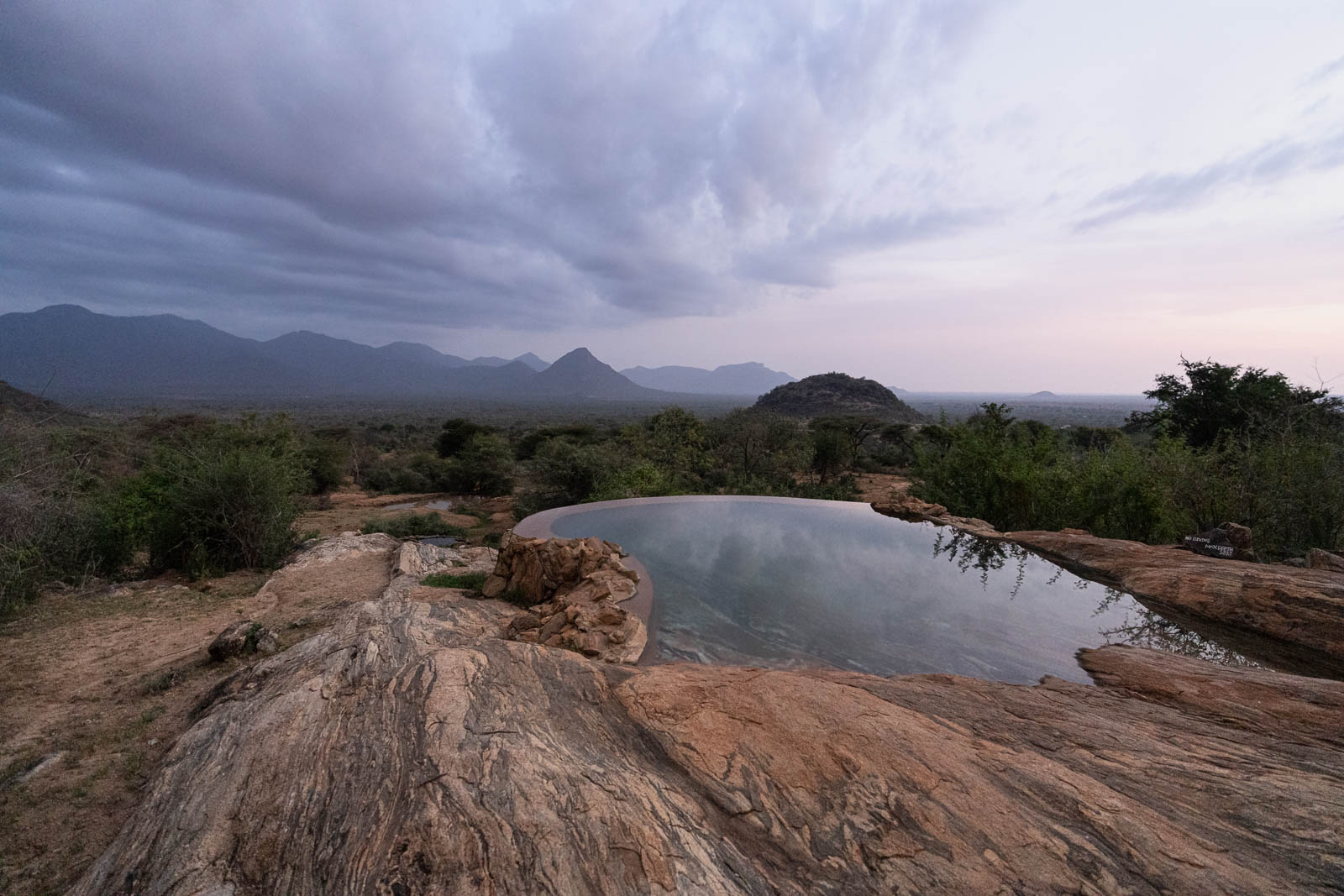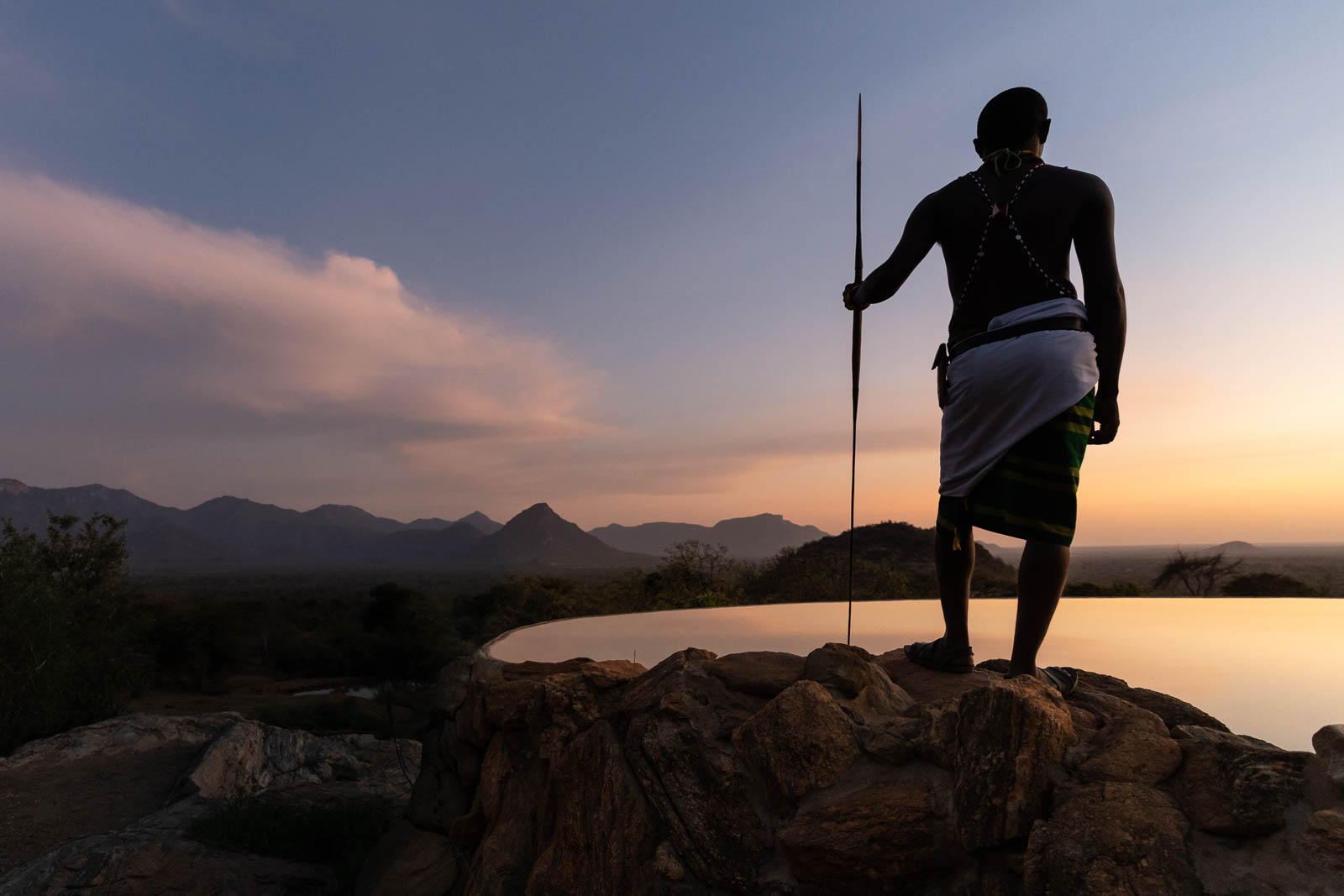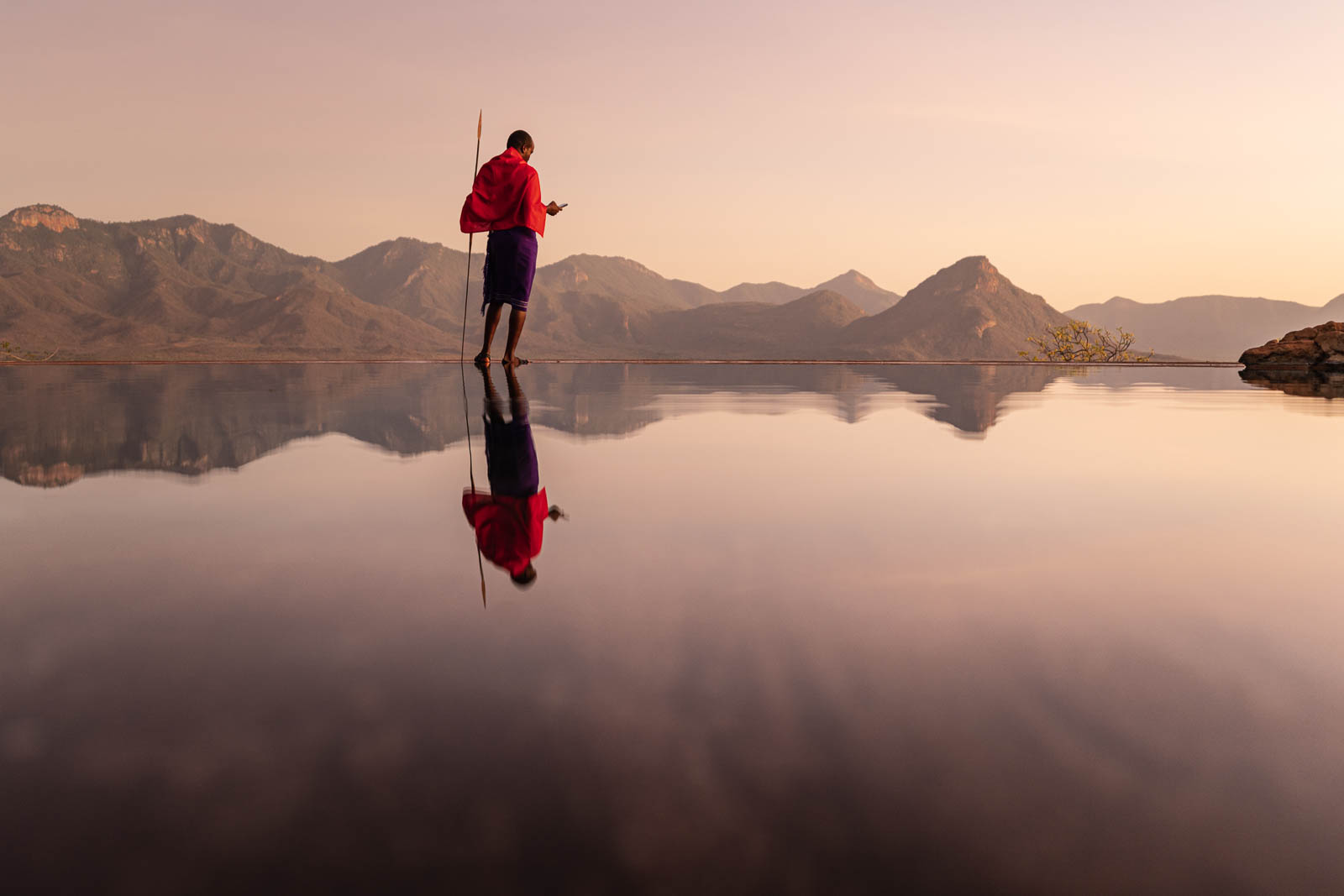I traveled once with a photographer who would leap into a scene, press the shutter, and more often than not exclaim, “I got the shot!”
Depending on whether you were there at the time or only heard of it after the fact, it was either really annoying or mildly amusing. If the direction into which he leapt to “get the shot” happened to be in front of your camera, it was hard not to want to bludgeon him with the nearest tripod.
“I got the shot!” he would confidently claim. And that was that. Time to move on. Nothing more to see here. The target had been acquired.
I used to make fun of this until I found myself thinking in a similar way recently. I was on safari in gorgeous light, the sun was a hot ball of fire on its way below the horizon, and everything in the foreground begged to be underexposed and turned into a silhouette. It was beautiful, but not the first time I’ve photographed that kind of scene. I’ve shot it so often now that it’s been reduced to a formula to make the teaching easier: use your longest focal length, tighten your aperture (F/18 or 22 is good), and underexpose by 3-5 stops, depending on where you’re metering from. The sun ball gets well defined, gets larger as your focal length increases, and underexposing turns the giraffe/antelope/zebra/whatever in the foreground into a silhouette while also making the sky super colourful.
“I’ve got that shot” was what I was thinking on a recent game drive, giving myself an excuse not to pick up my camera and make the effort. And I was wrong. I didn’t have that photograph. Not that moment, not those exact elements, and not the chance to do this one differently. For a guy who writes about creativity, this was not me at my most creative.
“I got the shot”—or the various versions of it—is lazy thinking.
And it’s wrong-headed. There is no “the shot.” There are only infinite variations on a theme and opportunities to do it differently. Sure, you’ve already made a photograph in similar circumstances, but your choice of lens and perspective, what you include or exclude, the moment you choose, the exposure value you decide upon, etc., are what make the photograph.
The ways in which we make something new or different from familiar scenarios are almost infinite. Or they can be.
I found myself thinking this way more than once in Kenya last month. As I built the body of work I was creating, I kept hearing, “But I’ve got that shot” in my head. Lions playing. A mother cheetah and cubs. Animals against the rising or setting sun. And each time, I had to fight back. “Not this one, not this time,” I would remind myself. You never know what’s coming. You never know when the familiar will zag into the previously un-seen, when the cheetahs will do something unexpected, or when your thinking finally changes about that sunset shot and you try something different or see something new.
When I look at my bodies of work over the years—the series of images I’ve made—I’m always struck how later efforts at one kind of photograph are stronger and more refined versions of earlier efforts. My editing process over days or weeks often finds me excluding from my collection an image I thought was amazing, only to realize I could do better. And I wonder how often “I got the shot!” or “I’ve already got that shot,” might have stopped me from making the effort to do better. To take more risks. To be a little more creative and take a chance at something better and different.
You might already have a shot. It might be the strongest photograph you’ve made so far. But don’t let that get in the way of attempting to do it differently, or to make it stronger, to be more creative with the combinations of settings, composition, light, elements of story, or any of the other decisions we make with the camera, in the edit, or while developing an image.
There is no the shot. There are photographs you’ve made—and photographs you will make, but there is no one, single, “the shot.” Not while you’re still photographing, there isn’t.
Whether the next one is stronger or different is up to you. But if “I’ve (already) got that shot” prevents you from putting the camera to your eye and being more creative, then you’re probably right: you have the shot. But it’s not going to get any better.
Most of us photograph similar things many, many times as we grow in our craft. Writers are like this, too: their later stories or novels often contain the seeds they planted in their earlier work. But they’re stronger now. More nuanced in the more mature work. Less simplistic, perhaps. I suspect many artists are like this, working with familiar themes and materials, never seduced by the idea that they’ve done their past work so well that it can never be refined, reattempted, or remixed in the future, especially as they grow in their craft, vision, or both.
The photographer you were a year, a month, or even two days ago might have “got the shot,” but the photographer you have become since then hasn’t yet (please forgive the pun) had a shot at it.
Creatively speaking, there is immense freedom in this. It frees us from repeating ourselves but also gives us permission to keep trying with the subjects, themes, and techniques that most fascinate us. It also frees us from trophy hunting, as though we’re all just working with a checklist or the pressure to compare our work with what’s already out there.
Most of us don’t want “the shot” as much as we want the next shot, a stronger shot, or a shot that is uniquely our own.
I don’t like the words “shoot” or “shot.” I’ve used them here, and they slip into my vocabulary now and then because they are part of the language of popular photography. But I fight against it, and one reason is this: photography is not about hitting a target. Not for me, and I suspect not for you. It’s about exploration and expression. My subjects are not bullseyes at which I aim, and which I either hit or miss.
Choice of words aside, I think our strongest work can only be identified in hindsight. It’s the work that endures and continues to thrill us in the long term. And it’s often the work that we got to the long way, led there by our earlier efforts. I find the idea that we “got the shot” a little too presumptuous and self-congratulatory to lead us any further.
For example, I made a landscape image in Kenya that I liked (below), and there it was: “I’ve got the shot.” But I kept thinking I could do better; there was more possibility in that scene than I had explored. I went back the next morning and made another photograph that I was much happier with because the results were totally different. But I was sure there was more there—no mere “one shot” to be harvested. So I went back the next morning at the same time and made something completely different.



Don’t let the idea that you’ve got the shot stand in the way of trying again, exploring different approaches, going back for different light or stronger moments. If the magic was there once, it might be there again—and better than you imagined.
For the Love of the Photograph,
David.


Comments
Bonjour David,
Merci infiniment pour vos propos inspirants. Je vous ai découvert que très récemment : votre site web, vos fiches, vos livres. Je suis à lire “L’âme du photographe”. Il n’y a pas de mots pour exprimer l’effet de vos réflexions et de votre démarche. Comme photographe, et comme individu, j’avais besoin de ces réflexions humanistes pour avancer.
Merci encore et salutations cordiales.
MC de Québec.
Pingback: Your Best Shot Isn’t (Usually) Your Only Shot - Ahmed blogs
I have ImageWork and 5 of your books so you could say that I am a real fan!
While reading “The Heart of the Photograph,” I realized that I could also use it to address a specific problem of mine: for a combination of reasons, most of my outings are within a radius of 100 miles, inevitably taking me to locations that a have visited several times before.
To motivate me to return to familiar places with an open mind, I developed a 14-point checklist of potential new “right answers,” using POV, different optics etc. as a starting point. In fact , equipped with this checklist, tomorrow morning I am planning to explore one of these “well-mined” locations.
Thank you for your inspiring words and images!
Wow David, This set is absolutely beautiful. I love how you’re using color these days…. The guide and reflective pool is my absolute favorite. I don’t know if its Kenya (I’ve been there and desperately want to return) or what but this set really hits it big with me. I’m also inspired to get a print shop up and running…I’ve been thinking about doing that for the past year now.
This post really helps me think more creatively about my photography. I do better with this way of thinking when it comes to landscape type photography as I return over and over to familiar places. But I often struggle with this mindset with wildlife photography especially with less iconic subjects. I often don’t pursue them because I already have that shot. Then when I have occasion to be reviewing photos of that subject where I definitely have the shot I find I am no longer satisfied with what I have. In my minds eye I have the shot. The me of the past was satisfied with those images but the me of the future is not. I need to continue to think of my wildlife photography as growing and developing.
Sincerely,
Kyle Reynolds
https://krnaturalphoto.com/
What a wonderful collection of photographs in the “Savannah” section. Truly inspiring. I have been all over the world in another life but never to Kenya. It is now on my bucket list. Thanks for the inspiration.
Thank you for ‘Savannah’ – truly inspirational
Pingback: Your Easiest Shot Isn’t (In most cases) Your Most effective Shot – Website0
David, thank you so much for all your books, and this one “Savannah” is gorgeous, how I wish to return with digital cameras, back in th 90’s film still ruled, never enough, never. Did make two books though, at BLURB, on the Panoramics one I used the Pre-Set you gave us in “Safari” you can download an ebook free if you please at:
https://www.blurb.com/user/Beretta?profile_preview=true
Thank you so much again
Thank you so much David for your generosity in sending the “Savannah” PDF. Your pictures of these magnificent animals are truly respectful – I love them.
As always, inspiring and motivating ! Thank’s for that David !
I am inspired by your photos and though I am down to using my phone for photos its still fun to see what I get. I am painting in watercolours and acrylics now and am chair of the Aldergrove Art Club. Busy but I’m happy and healthy and would love to hear from you. Maybe a signed autograph? Faith
There is a peace, simplicity, connection, and depth to your photographs that keeps me looking. There is a feeling of being in the presence of a master: no words, just awareness and connection. While I read your books and follow your podcasts on creativity and the work of being a creative, it is your photography and the quiet place it creates within me that spurs me on. Thanks David.
I so look forward to these. It inspires me to take better photographs and to explore my vision of which I am still searching for. Thank you.
I never tire of being reminded of this, and you’ve (again) provided a great example of how our thought processes and the resulting images can evolve if we just give them the freedom to do so.
Another photographer recently shared a quote that I think is related:
Wayne Gretzky – “You miss 100% of the shots you don’t take.”
Just want to say’ “hello”… and love the message. I have spent another winter walking open Manitoba prairies seeking out another display of wind blown snow… every time I wander the lines, shapes and textures have morphed under the influence of the environment… my walks become the search for the next (not shot) but reveal of nature’s beauty… and never expect to find the perfect ‘shot’ because it does not exist, but the next beautiful frame is just over the next drift…
It’s just what I needed to hear today! I used to photograph weddings etc but retired and making my own schedule and my own photographic work now. And, it’s harder than I thought- but I was making it harder. The idea that I can wander my neighborhood or some other amazing place and there will always be something new to explore or that I can keep making better every tile I go out there is so inspiring. Thanks!
This is so true. You are never “done”. I’ve visited Kenya 8 times and there were people that asked me: “All those pictures of lions, haven’t you made enough of them now?” and I told them: “It’s never done. There’s always something else to explore.” That’s more so with subjects that move. They are never the same. But I think with every subject at least the light is never the same and isn’t photography called “painting with light?”
By the way: I love your blogs and videos. The way you tell your stories: very inspiring! Thank you!
“A man between two worlds” is brilliant! One of my hiking buddies refused to take photos when we have our phones out but if I’m using my DSLR no problem. I’m going to tell him that I’m just “between two worlds” from now on. 😁
Your blog posts are always so inspiring! Thank you.